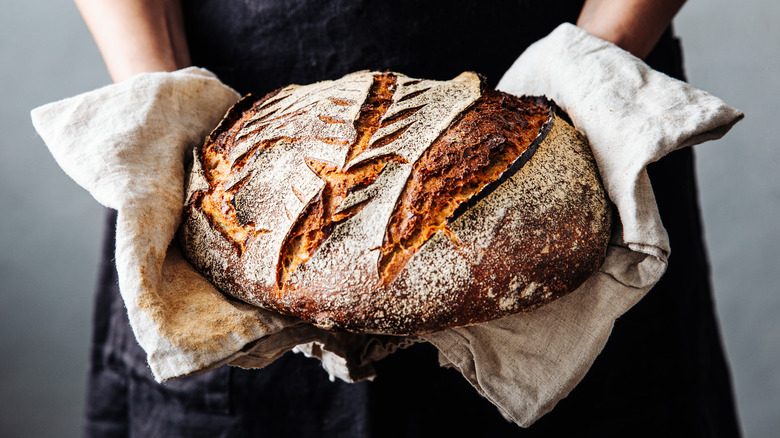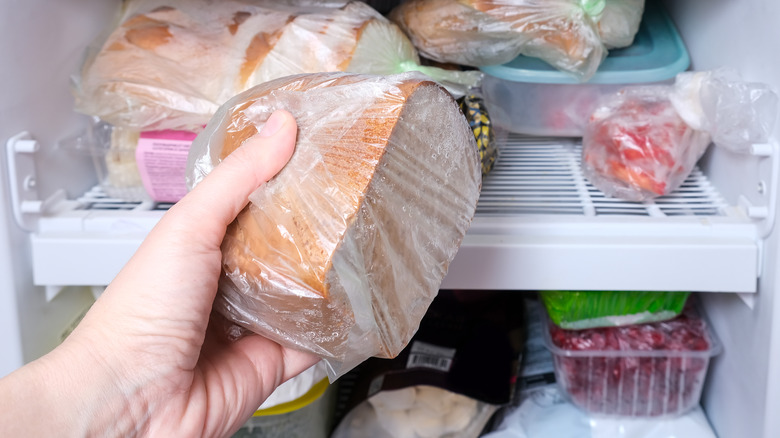The Best Way To Store Homemade Sourdough Bread
Baking homemade sourdough bread requires time and a lot of patience. You first need to feed and activate your starter hours before you plan to mix the bread dough, and usually, this dough needs to spend several hours on the counter with a few folds or slaps in between. Ideally, when the gluten is sufficiently developed, the dough should go straight to cold fermentation in the fridge, which slows the gluten and allows flavors to develop. Unsurprisingly, after all of this effort — once you bake the perfect loaf with an open crumb and a perfectly crispy crust — you'll want to store your sourdough bread properly so it stays fresh and retains flavor.
There are several ways to store your homemade sourdough bread, but the best is to keep it unwrapped, ideally on a cutting board or inside of a breadbox with the sliced side facing down. Another helpful trick is to cut the loaf in half, take out a slice, then connect both ends so the center stays protected. The bread can stay like this for up to two days. This method is best suited for round loaves with fewer exposed parts that lose moisture.
If you don't finish your bread in two days, just wrap it in cloth, aluminum foil, a paper or plastic bag, or beeswax wrap. Wrapping your bread will keep the moisture locked in so it won't dry out, but this will also soften the crust, so be prepared to lose that distinctive crunch.
Freezing is the best way to preserve bread long-term
Although sourdough bread stays fresh longer than many other varieties — mostly due to a specific fermentation that creates high acidity — it's generally recommended that you finish the loaf within five days. If you can't do so, freezing is the best solution to preserve your bread for a longer period.
You can freeze your loaf either whole or sliced. Freezing the whole loaf is a great idea if you bake several at once, and this is a great way to save time and energy. You first need to let the loaf cool down, then wrap it tightly in plastic, put it inside of a zippered storage bag, and stack it in the freezer. You can do the same with individual slices, which you can simply put inside of a zippered bag. Freezing sliced sourdough bread allows easier portion control, as you can take out the amount you need and leave the rest in the freezer. Thaw the loaf on the counter or use a toaster to reheat frozen slices.
While freezing is a great option for storing sourdough bread, one of the common mistakes people make with sourdough is stacking it in the fridge. This is the worst place for storing sourdough bread, as it speeds up spoilage rather than slowing it down. In the fridge, the loaf's moisture will continue to evaporate, and your bread will quickly become stale.

